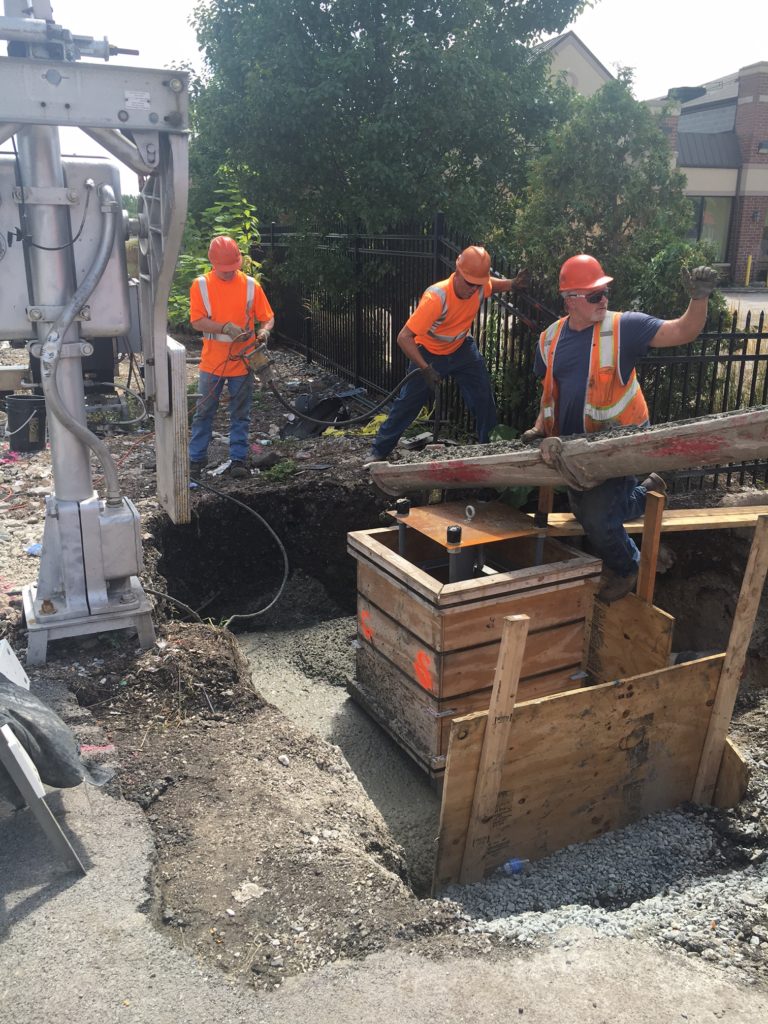
From left, Signal Maintainer Timothy O’Connell, Vehicle Operator James McNeill and Signal
Foreman Anthony Przewoznik set a signal foundation.
Archer Avenue
The Archer Avenue crossing has been upgraded. The enhancement took two weeks and includes state-of-the-art signal components, including new crossing gates, cantilevers and LED lighting.
Signal and Communication Supervisor John Ramirez said the equipment will be more reliable and user-friendly for maintainers. The old system required a team to perform testing and repair, but a lone maintainer can now work the gate.
It also will be easier for motorists to see. The LED lights aren’t affected by glare the way incandescent lights are, and they can be seen at a greater distance. They also last longer, so they’re more cost effective. Also enhancing visibility is a longer hanging cantilever that extends over the roadway.
Signal Maintainers Kenneth Hall, Timothy O’Connell and John Peters, Assistant Signal Maintainer Briley Ryan, Vehicle Operator James McNeill and Signal Foreman Anthony Przewoznik were among those who worked on the project.
One of the jobs was pouring a foundation for the signal system. The railroad elected to have its employees do it instead of purchasing a prefabricated foundation.
“They have been doing this kind of work for years,” Ramirez said.
Connecting Chicago’s Southwest Side to Downtown, Archer Avenue is a main artery. He believes the enhancement will serve the public well and enhance safety.
The team was committed to its safety as it performed the work.
“Safety is our responsibility,” Ramirez said. “Employees take it seriously. If we can’t do it safely, we won’t do it.”
Columbus Avenue
The Columbus Avenue crossing is set to be rehabbed.
With three Belt tracks crossing two lanes of traffic in each direction, it’s one of the largest in Engineering’s purview.
The new crossing will last longer and be easier to maintain. The old crossing was asphalt with rail seals. The new one will be concrete with pads.
Manager of Engineering Dave Cargill expects the project to take two weeks and conclude before November. As many as 15 employees are slated to work on the project, including trackmen, welders and helpers.
The tracks are approximately 150 feet through the crossing, which is near busy Western Avenue.
“It will enhance service for the traveling public,” Cargill said.
It’s the third time in his career the crossing has been overhauled.
